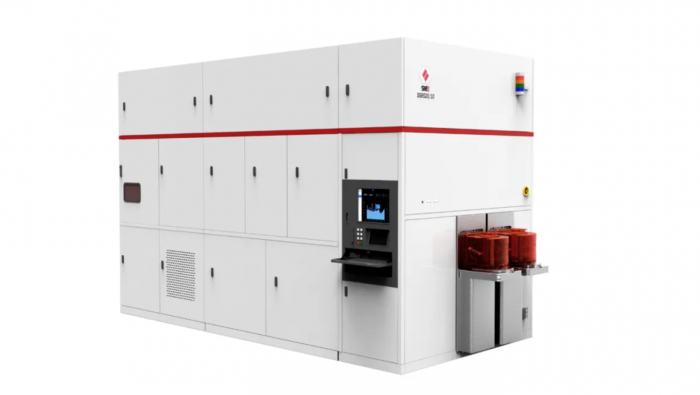
Recently, Shanghai Microelectronics held a new product launch conference and announced the launch of a new generation of large-area high-resolution advanced packaging lithography machine. At present, Shanghai Microelectronics has reached sales agreements with several customers for a new generation of advanced packaging lithography machines, and the first will be delivered within this year.Optical lithography is a technique that uses light to project and copy mask patterns. The integrated circuit is formed by a projection exposure device to image patterns with different mask patterns on the substrate for manufacturing integrated circuits, thin-film magnetic heads and liquid crystal displays. A range of structures, such as plates, or micro-electromechanical systems.
Access:
2021 Tmall Double 11 Red Packet Collection Page
Gaining JD 2021 Double XI “Number One Beijing Sticker” Admission
Over the past few decades, the technology level of exposure equipment has been continuously developed to meet the needs of small line size, large exposure area, high reliability and productivity, and low cost. However, existing lithographic projection objective lenses still have problems such as small numerical aperture, low resolution, narrow applicable wavelength band, invariant numerical aperture and high manufacturing cost of aspheric lenses.
For this reason, Shanghai Microelectronics applied for an invention patent named “a lithographic projection objective and lithography machine” on December 30, 2018 (application number: 201811648523.1), and the applicant is Shanghai Microelectronics Equipment (Group) company limited by shares. Is.
Figure 1 Schematic Diagram of the Lithographic Projection Objective Lens Structure
1 is a schematic diagram of the structure of the lithographic projection objective proposed by the present invention, with the first lens group, the second lens group, and the third lens group, as well as the fourth lens group and fifth lens arranged symmetrically. The above lens group about the aperture group and the sixth lens group. By adjusting the size of the aperture of the diaphragm, the numerical aperture of the lithography projection objective can be adjusted, allowing the capability of the lithography projection objective to be suitable for different scenes. In addition, the focal length setting of each lens group can increase the numerical aperture of the lithography projection objective lens, and improve the resolution of the lithography projection objective lens.
The first lens group G1, the third lens group G3, the fourth lens group G4, and the sixth lens group G6 have positive refractive power, and the second lens group G2 and fifth lens group G5 have negative refractive power. Optical power is equal to the difference between image-side beam convergence and object-side beam convergence, and it represents the optical system’s ability to deflect light. The higher the absolute value of the optical power, the stronger the bending ability for light and the weaker the bending ability for light. When the refractive power is positive, the refraction of light is convergent, otherwise it is diverging. Optical power can be used to mark a certain refracting surface of a lens, or to mark a certain lens, or it can be used to mark a system made up of multiple lenses. could.
Each lens group and all lenses in a stop stop are spherical lenses. Spherical lens refers to a constant curvature from the center to the edge of the lens. The two refracting surfaces of a spherical lens are spherical, whereas the curvature of an aspheric lens varies continuously from center to edge. Therefore, the spherical lens is relative to the aspheric lens in terms of easier processing. All lenses in the embodiment of the present invention adopt spherical lenses, which reduce the processing cost of the lens in the lithographic projection objective, shorten the processing period of the lens, and improve the assembly and adjustment efficiency of the lithographic projection objective.
In a nutshell, Shanghai Microelectronics’ lithography projection objective lens patent, through the use of a spherical lens design, reduces processing and manufacturing costs, increases the numerical aperture, and is suitable for the Ge three-line band. The applicable view of the projection objective has been expanded, and the resolution of the lithography machine has been improved.





